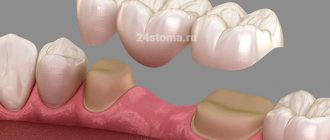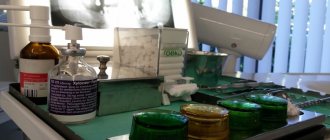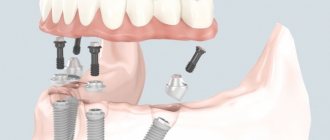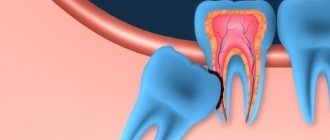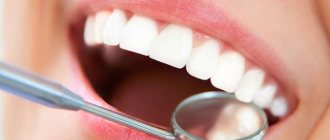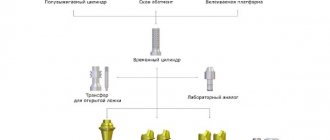From ash and sticks: what did our ancestors use to clean their teeth?
- Articles
- 6 June 2022, 09:16
The first week of summer, June 4, is International Tooth Caries Day. Read in the article “Kuban 24” how humanity cared for its teeth to advertising recommendations from the best dentists.
Miswak and ram's horn
Archaeologists suggest that primitive people began brushing their teeth 5000-3000 BC. e. — they chewed tree resin and beeswax. Later, salt, resin, plant particles, and charcoal were used as cleaning agents.
The first toothbrush and tooth powder recipes appeared in Ancient Egypt. The “brush” was a thin tree branch chewed at one end - a miswak (sivak).
Photo iney-cleaning.ru
The following drugs were used as tooth powder: a mixture of finely ground frankincense, myrrh, mastic tree, raisins and ram's horn; powder from ground ox entrails, myrrh, crushed pumice, eggshells.
Both recipes had the same drawback - an excess of abrasive elements in the composition, which severely damaged tooth enamel.
Also, the ancient Egyptians periodically rubbed their teeth with onions. In general, in Ancient Egypt it was prestigious to have healthy white teeth.
The first dentist - Hippocrates
The first doctor to formulate the medical necessity of brushing teeth was Hippocrates. He was the first to describe dental diseases. The Greeks were the first to treat teeth using lead fillings, and used wine and sea water as disinfectants.
The first toothpaste in Ancient Greece appeared in the 1500s BC. e. It included pumice, talc, crushed coral and iron oxides.
Ancient Rome did not “reinvent the wheel”, but adopted the methods of brushing teeth from the ancient Greeks. Later, Rome created its own tradition of dental treatment and care. A mixture of crushed oyster shells and honey with water was used as toothpaste.
Photo the300spartans.ru
Horns and hooves
In the East, Arabs, Indians and Chinese in ancient times had their own approaches to brushing teeth. For example, in China, powder from cattle hooves and horns and sea shells was used for this. In India, a mixture of salt, honey and ash was in use. Ash was taken from burnt wood, seaweed, rosemary or bread. After cleaning, rinse your mouth with rose water, mint or thyme infusion. By the way, these rinsing methods are still relevant today - they are useful.
The above-mentioned miswak was popular in Arabia and desert Muslim countries. This method did not require rinsing with water after cleaning, and in the desert countries of the Middle East, water was always worth its weight in gold. To prevent caries, Arabs chewed natural resins and incense.
Photo expertdent.net
Toothless Middle Ages
In the Middle Ages, having white and healthy teeth was considered bad form, which of course does not fit with the romance of knightly tournaments, beautiful princesses and crusades. But alas, historical sources do not lie - there was a misconception in medicine that you can become infected with deadly diseases through your teeth, and therefore it is better to remove them preventively. A common practice at that time was the special removal of all teeth. Marquises, counts and even kings boasted to each other about their toothless mouths.
Photo fishki.net
Throughout the Middle Ages, white and healthy teeth were a sign of commoners and peasants. By the way, people of the lower classes looked after and looked after their teeth - they used herbal and mineral mixtures and charcoal as toothpaste - ordinary people did not have money for powders made from expensive ingredients.
At the end of the 15th century, the prototype of a modern toothbrush appeared in China - a stick or bone with bristles from a pig or some other animal.
Photo biblio-on-line.blogspot.com
From China, the toothbrush in its modern form came to Europe. True, instead of pig bristles, they often began to use horse hair. Rich people had toothpicks made of gold, silver and precious stones.
How did our ancestors brush their teeth? It is reliably known that in Rus' the first toothbrushes - sticks with a tuft of bristles at the end (they were called “tooth brooms”) appeared during the time of Ivan the Terrible.
During his reign, Peter I was concerned about the appearance of his boyars and ordered them to brush their teeth with charcoal, chalk or a damp cloth.
From ash to fluorine
People used toothbrushes for several centuries until Louis Pasteur came up with the idea that they could harbor harmful bacteria. The popularity of toothbrushes subsided for a while. But then the brushes simply began to be changed more often.
In the 18th century, in England, tooth powder appeared in composition as close as possible to the modern one; it included soap shavings, crushed chalk and mint. But it was the privilege of the rich; the poor still brushed their teeth with charcoal or ash applied to their finger.
In the 19th century, mass production of toothbrushes began in England, France, and Germany. Russia and China became their suppliers of bristles. The wool of the Siberian boar was especially highly prized.
Photo chippfest.blogspot.com
In 1892, Washington Sheffield (a dentist by training) finds a revolutionary solution - a tube of toothpaste. He got the idea from artists who already had paints in tubes at that time. Since 1896, Colgate began producing toothpaste in tubes. And only in 1956 the first toothpaste containing fluoride appeared and was released.
At the same time, the evolution of the toothbrush continued. In 1938, synthetic fibers replaced natural bristles. In the same year, an electric toothbrush was invented in Switzerland, but it was not in demand. These brushes worked from the mains and were wired. Brushes with a built-in battery appeared much later.
Photo smiledesigns.com.au
According to numerous sociological surveys in many countries, the toothbrush and toothpaste are considered one of the main inventions of mankind.
The dead will help
The first dentist in the world, whose name is known for certain, was the Egyptian Hesi-Ra, who lived in the 27th century BC and served Pharaoh Djoser. The inscriptions in the tomb of Hesi-Ra call him not only “senior over the royal scribes” and “chief architect”, but also “dentist.” It is not known for certain what Hesi-Ra did with Djoser’s teeth, but he did create the pyramid at the foot of which he was buried. Nevertheless, dentistry in Egypt clearly developed quite intensively. The Ebers Papyrus, dating from the 16th century BC, gives eleven dental tips, including a recipe for a composition reminiscent of a modern composite filling: filler (ground barley), binder (honey) and antiseptic (yellow ochre).
The ancient Egyptian civilization also knew dental implants: in the mummy of one of the pharaohs of the 10th century BC, researchers discovered a copper tooth implanted into the jaw; Also preserved is probably the first dental bridge in human history - two donor teeth attached with copper wire to the lower jaw of an unidentified mummy from the 20th century BC. It is unknown, however, whether these prostheses were made during life or placed before mummification for purely aesthetic purposes (most modern researchers are inclined to the second).
Bridge with donor teeth
Photo: egyptopedia.info
The same is likely true of an iron tooth found on the jawbone of the skull of a noble Celtic woman who died about 300 BC in what is now France. The lack of anesthesia made the implantation process almost impossible due to unbearable pain - and even if the operation could be completed without death, it was inevitably followed by implant rejection - either due to infection or due to tissue incompatibility (the idea of transplanting the teeth of dead people or animals was popular among ancient physicians).
Therapist: the head physician recalls
If there was no sharp pain, the person was sent to a therapist. He drilled out damaged tissue with a drill, which was less advanced than modern ones. The drills were large in diameter, so they destroyed the tooth so much that after several treatments by a doctor, the patient needed prosthetics. The treatment was carried out without anesthesia: it was used only for tooth extraction.
Fillings during treatment were made from amalgam - an alloy of metals with mercury, or cement. The first were durable, but dangerous to health, and the second fell out very quickly.
“Bitten the doctor”: Katya, 31 years old
My grandmother had an office at work where a female dentist worked. It was the mid-90s, in city clinics there was a queue and the quality of treatment was not the best, but here you had almost a personal doctor. She probably really was a good specialist, but she seemed to me the most terrible woman in the world.
The installation was old and squealed very disgustingly when working. Of course, there was no anesthesia, only persuasion to be patient. And my teeth weren’t the best. Therefore, literally on my first visit to her, I couldn’t think of anything better than to bite her finger. Well, it hurts me, so I’ll hurt you too.
Actually, that’s where the treatment ended, because she flatly refused to work with me. The parents had to look for a new doctor who agreed to work with the mad girl. But somehow they found it, because I went to school with normal teeth.
More than one doctor could work in one office
Photo: Voronezh Regional Clinical Dental Clinic
My golden ones
Since it was not very possible to cure damaged teeth, ancient dentists focused on at least somehow achieving aesthetic perfection. This is how dental crowns were born, attached to the remains of a decayed tooth. The first known examples date back to the 2nd century, they were found in the territory of modern Tuscany, Italy. The material was gold - as, indeed, centuries later. Already in our century of high-strength plastics and composite materials, the American Dental Association indicates the following advantages of gold crowns (today, by the way, they are made from an alloy with copper and other metals): tightness, wear resistance, minimal removal of healthy tissue, low rejection. And besides, as the website of a famous toothpaste brand notes, “you will have a simply unique smile.”
A “unique smile” was worth a lot from the then universal value equivalent, so less wealthy people tried dental crowns made from the teeth of corpses or animals. Such crowns made it possible to at least chew not very hard food, but they smelled disgusting and over time could lead to infection in the oral cavity. The smell, however, did not bother anyone in those days - the ancient Romans, for example, used toothpaste based on human urine (the ammonia it contained served as a bleaching agent), and in medieval Europe, brushing teeth, and washing the body in general, was not particularly were interested.
Mayan inlaid teeth
Photo: National Museum of Dentistry
Overseas, in the still undiscovered America, the Mayans achieved great success in the field of cosmetic dentistry. The men of the tribe decorated their teeth with inlays of precious stones, skillfully embedded in carefully drilled holes - apparently, Mayan dentists were quite well versed in anatomy, since the apertures of the skulls found do not reach the pulp. According to the Mexican anthropologist Jose Concepcion Jimenez, such decorations were not a sign of special social status, but served a purely decorative purpose and were used by people of all walks of life. As the scientist notes, such decorations are absent from the found royal Mayan mummies.



